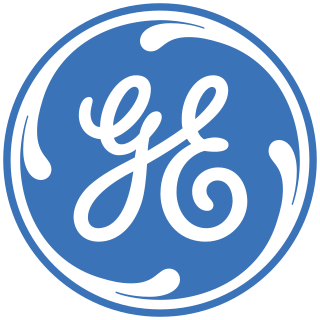
A minicomputer, or colloquially mini, is a type of smaller general-purpose computer developed in the mid-1960s and sold at a much lower price than mainframe and mid-size computers from IBM and its direct competitors. In a 1970 survey, The New York Times suggested a consensus definition of a minicomputer as a machine costing less than US$25,000, with an input-output device such as a teleprinter and at least four thousand words of memory, that is capable of running programs in a higher level language, such as Fortran or BASIC.
Mary is a programming language designed and implemented by Mark Rain at RUNIT in Trondheim, Norway during the 1970s. It borrowed many features from ALGOL 68 but was designed for systems programming, with a subset of operations being reserved for higher-level usage.
QED is a line-oriented computer text editor that was developed by Butler Lampson and L. Peter Deutsch for the Berkeley Timesharing System running on the SDS 940. It was implemented by L. Peter Deutsch and Dana Angluin between 1965 and 1966.
UNICOS is a range of Unix and later Linux operating system (OS) variants developed by Cray for its supercomputers. UNICOS is the successor of the Cray Operating System (COS). It provides network clustering and source code compatibility layers for some other Unixes. UNICOS was originally introduced in 1985 with the Cray-2 system and later ported to other Cray models. The original UNICOS was based on UNIX System V Release 2, and had many Berkeley Software Distribution (BSD) features added to it.

Computer operating systems (OSes) provide a set of functions needed and used by most application programs on a computer, and the links needed to control and synchronize computer hardware. On the first computers, with no operating system, every program needed the full hardware specification to run correctly and perform standard tasks, and its own drivers for peripheral devices like printers and punched paper card readers. The growing complexity of hardware and application programs eventually made operating systems a necessity for everyday use.

Norsk Data was a minicomputer manufacturer located in Oslo, Norway. Existing from 1967 to 1998, it had its most active period from the early 1970s to the late 1980s. At the company's peak in 1987, it was the second largest company in Norway and employed over 4,500 people.

General Comprehensive Operating System is a family of operating systems oriented toward the 36-bit GE-600 series and Honeywell 6000 series mainframe computers.
A DOS extender is a computer software program running under DOS that enables software to run in a protected mode environment even though the host operating system is only capable of operating in real mode.
In computing, an extent is a contiguous area of storage reserved for a file in a file system, represented as a range of block numbers, or tracks on count key data devices. A file can consist of zero or more extents; one file fragment requires one extent. The direct benefit is in storing each range compactly as two numbers, instead of canonically storing every block number in the range. Also, extent allocation results in less file fragmentation.

Nord-10 was a medium-sized general-purpose 16-bit minicomputer designed for multilingual time-sharing applications and for real-time multi-program systems, produced by Norsk Data. It was introduced in 1973. The later follow up model, Nord-10/S, introduced in 1975, introduced CPU cache, paging, and other miscellaneous improvements.
Sintran III is a real-time, multitasking, multi-user operating system used with Norsk Data minicomputers from 1974. Unlike its predecessors Sintran I and II, it was written entirely by Norsk Data, in Nord Programming Language, an intermediate language for Norsk Data computers.
The Nord-100 was a 16-bit minicomputer series made by Norsk Data, introduced in 1979. It shipped with the Sintran III operating system, and the architecture was based on, and backward compatible with, the Nord-10 line.

The ND-500 was a 32-bit superminicomputer delivered in 1981 by Norsk Data priced from £75,000 for the base model. It relied on a ND-100 to do housekeeping tasks and run the OS, SINTRAN III. A configuration could feature up to four ND-500 CPUs in a shared-memory configuration.
ND-COSMOS was the proprietary computer networking system developed by Norsk Data as the second generation NORDNET system.
Nord Programming Language (NPL), is a procedural programming language by the Norwegian minicomputer manufacturer Norsk Data. It shipped as a standard component of the operating system Sintran III.
The history of IBM mainframe operating systems is significant within the history of mainframe operating systems, because of IBM's long-standing position as the world's largest hardware supplier of mainframe computers. IBM mainframes run operating systems supplied by IBM and by third parties.

Norsk Data (ND) was a Norwegian manufacturer of minicomputers which operated between 1967 and 1992. The company was established as A/S Nordata – Norsk Data-Elektronikk on 7 July 1967 and took into use the Norsk Data brand in 1975. The company was founded by Lars Monrad-Krohn, Rolf Skår and Per Bjørge, three computer engineers working at the Norwegian Defence Research Establishment which had just built the minicomputer SAM 2. ND's first contract was the delivery of a Nord-1 computer to Norcontrol. Initially in competition with Kongsberg, ND started delivering computers to Norwegian institutions. By 1972 the company had developed Sintran operating system, the 32-bit Nord-5 and a time sharing system.
The Research and Development Network in Norway or FUNN was fourteen computing centers established in regional districts in Norway established by Norsk Data (ND) and the Ministry of Trade and Industry in 1989. These were located in Ålesund, Alta, Bø, Gjøvik, Grimstad, Kirkenes, Kristiansund, Mo i Rana, Narvik, Sarpsborg, Sogndal, Steinkjer, Stord and Tromsø. Each had two Norsk Data-built minicomputers, one running Sintran III and one running Unix. Participating agencies included the Regional Development Fund, the Ministry of Local Government and Regional Development, the Norwegian Telecommunications Administration (NTA), and the Royal Norwegian Council for Scientific and Industrial Research (NTNF).

The Offshore and Onshore Reliability Data (OREDA) project was established in 1981 in cooperation with the Norwegian Petroleum Directorate. It is "one of the main reliability data sources for the oil and gas industry" and considered "a unique data source on failure rates, failure mode distribution and repair times for equipment used in the offshore industr[y]. OREDA's original objective was the collection of petroleum industry safety equipment reliability data. The current organization, as a cooperating group of several petroleum and natural gas companies, was established in 1983, and at the same time the scope of OREDA was extended to cover reliability data from a wide range of equipment used in oil and gas exploration and production (E&P). OREDA primarily covers offshore, subsea and topside equipment, but does also include some onshore E&P, and some downstream equipment as well.






